 W
WA brazen head, brass, or bronze head was a legendary automaton in the early modern period whose ownership was ascribed to late medieval scholars, such as Roger Bacon, who had developed a reputation as wizards. Made of brass or bronze, the male head was variously mechanical or magical. Like Odin's head of Mimir in Norse paganism, it was reputed to be able to correctly answer any question put to it, although it was sometimes restricted to "yes" or "no" answers. In the seventeenth century, Thomas Browne considered them to be misunderstanding of the scholars' alchemical work, while in modern times, Borlik argues that they came to serve as "a metonymy for the hubris of Renaissance intellectuals and artists". Idries Shah devotes a chapter of his book The Sufis to providing an interpretation of this "head of wisdom" as well as the phrase "making a head", stating that at its source the head "is none other than the symbol of the [Sufic] completed man."
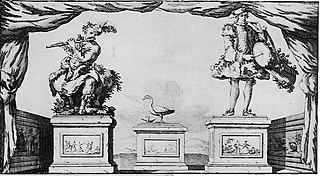 W
WThe Canard Digérateur, or Digesting Duck, was an automaton in the form of a duck, created by Jacques de Vaucanson and unveiled on 30 May 1739 in France. The mechanical duck appeared to have the ability to eat kernels of grain, and to metabolize and defecate them. While the duck did not actually have the ability to do this—the food was collected in one inner container, and the pre-stored feces were "produced" from a second, so that no actual digestion took place—Vaucanson hoped that a truly digesting automaton could one day be designed.
 W
WElektro is the nickname of a robot built by the Westinghouse Electric Corporation in its Mansfield, Ohio facility between 1937 and 1938. Seven feet tall, weighing 265 pounds (120.2 kg), humanoid in appearance, he could walk by voice command, speak about 700 words, smoke cigarettes, blow up balloons, and move his head and arms. Elektro's body consisted of a steel gear, cam and motor skeleton covered by an aluminum skin. His photoelectric "eyes" could distinguish red and green light. He was on exhibit at the 1939 New York World's Fair and reappeared at that fair in 1940, with "Sparko", a robot dog that could bark, sit, and beg to humans.
 W
WThe elephant clock was a medieval invention by Ismail al-Jazari (1136–1206), an engineer and inventor of various clocks. The device consisted of a weight powered water clock in the form of an Asian elephant. The various elements of the clock are in the housing (howdah) on top of the elephant. In China a clock escapement mechanism was invented by the polymath Buddhist monk Yi Xing. Hydraulically powered waterwheels and water clocks were also used in the mechanically driven and rotated equatorial armillary sphere of Zhang Heng and Ma Jun. The elephant clock had some design differences compared to earlier waterclocks.
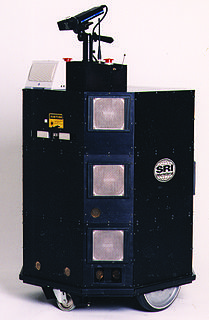 W
WFlakey the robot was a research robot created at SRI International's Artificial Intelligence Center and was the successor to Shakey the robot.
 W
WGakutensoku, the first robot to be built in the East, was created in Osaka in the late 1920s. The robot was designed and manufactured by biologist Makoto Nishimura. Nishimura had served as a professor at Hokkaido Imperial University, studied Marimo and was an editorial adviser to the Osaka Mainichi newspaper.
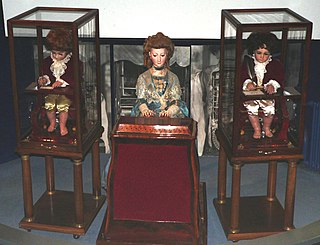 W
WThe Jaquet-Droz automata, among all the numerous automata built by the Jaquet-Droz family, refer to three doll automata built between 1768 and 1774 by Pierre Jaquet-Droz, his son Henri-Louis, and Jean-Frédéric Leschot: the musician, the draughtsman and the writer. The dolls are still functional, and can be seen at the Musée d'Art et d'Histoire of Neuchâtel, in Switzerland. They are considered to be among the remote ancestors of modern computers.
 W
WKarakuri puppets are traditional Japanese mechanized puppets or automata, made from the 17th century to the 19th century. The dolls' gestures provided a form of entertainment. The word 'karakuri' has also come to mean "mechanisms" or "trick" in Japanese. It is used to describe any device that evokes a sense of awe through concealment of its inner workings.
 W
WThe Ladybird of Szeged or Ladybug of Szeged is an early robot which was developed in Hungary at the Cybernetics Laboratory of the University of Szeged (SZTE) between 1956 and 1957. The roughly hemispherical machine has a red shell with black dots, resembling a ladybird, hence its name. The Ladybird is one of the first Hungarian robots, and the first robotic animal ever constructed. It was designed and built by Dr. Dániel Muszka, with the main intention of emulating Pavlovian conditional reflexes in a machine.
 W
WLeonardo's robot, or Leonardo's mechanical knight, was a humanoid automaton designed and possibly constructed by Leonardo da Vinci around the year 1495.
 W
WThe Peacock Clock is a large automaton featuring three life-sized mechanical birds. It was manufactured by the entrepreneur James Cox in the 2nd half of the 18th century and through the influence of Grigory Potemkin it was acquired by Catherine the Great in 1781. Today it is a prominent exhibit in the collections of the Hermitage Museum in Saint Petersburg. The clock is also shown daily on the Russian TV channel Russia-K.
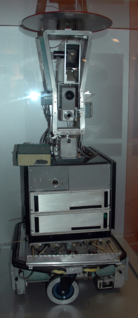 W
WShakey the Robot was the first general-purpose mobile robot to be able to reason about its own actions. While other robots would have to be instructed on each individual step of completing a larger task, Shakey could analyze commands and break them down into basic chunks by itself.
 W
WTipu's Tiger or Tippu's Tiger is an eighteenth-century automaton or mechanical toy created for Tipu Sultan, the ruler of the Kingdom of Mysore in India. The carved and painted wood casing represents a tiger savaging a near life-size European man. Mechanisms inside the tiger and man's bodies make one hand of the man move, emit a wailing sound from his mouth and grunts from the tiger. In addition a flap on the side of the tiger folds down to reveal the keyboard of a small pipe organ with 18 notes.
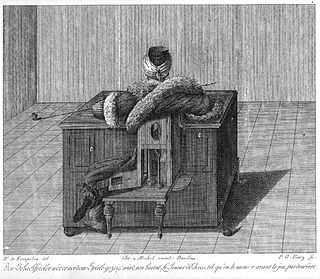 W
WThe Turk, also known as the Mechanical Turk or Automaton Chess Player, was a fake chess-playing machine constructed in the late 18th century. From 1770 until its destruction by fire in 1854 it was exhibited by various owners as an automaton, though it was eventually revealed to be an elaborate hoax. Constructed and unveiled in 1770 by Wolfgang von Kempelen (1734–1804) to impress Empress Maria Theresa of Austria, the mechanism appeared to be able to play a strong game of chess against a human opponent, as well as perform the knight's tour, a puzzle that requires the player to move a knight to occupy every square of a chessboard exactly once.
 W
WTurtles are a class of educational robots designed originally in the late 1940s and used in computer science and mechanical engineering training. These devices are traditionally built low to the ground with a roughly hemispheric shell and a power train capable of a very small turning radius. The robots are often equipped with sensor devices which aid in avoiding obstacles and, if the robot is sufficiently sophisticated, allow it some perception of its environment. Turtle robots are commercially available and are common projects for robotics hobbyists.
 W
WUnimate was the first industrial robot, which worked on a General Motors assembly line at the Inland Fisher Guide Plant in Ewing Township, New Jersey, in 1961.
 W
WXianxingzhe is the first bipedal humanoid robot in China, created in 2000 by the Chinese National University of Defense Technology in Changsha, Hunan. The robot, standing 140 cm tall and weighing 20 kg, walks at a pace of two steps per second. It was satirized in Japan, where, known as Senkousha , it became an internet phenomenon; one article described the protruding joints near the robot's crotch as a "cannon", resulting in internet games based on the concept.